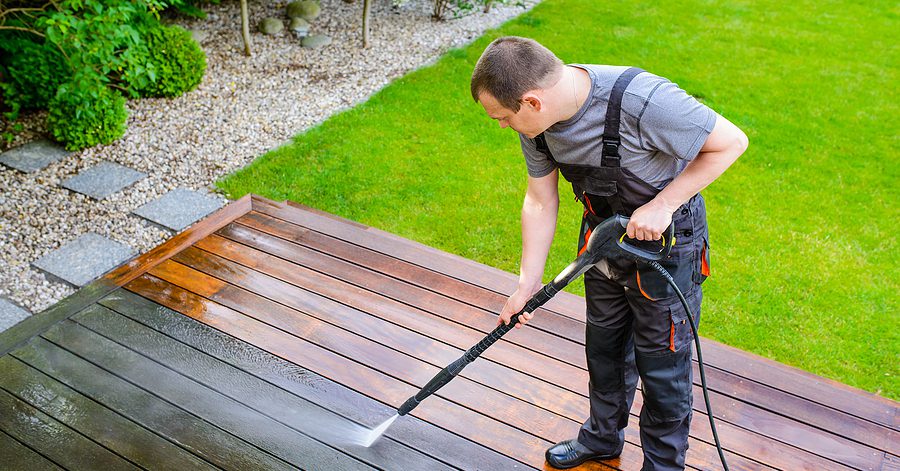
Your home’s exterior faces the elements 365 days a year. From rain and dust to pollen and mildew, every season brings new challenges—and unfortunately, those challenges build up fast. That’s where power washing comes in.
But how often should you schedule a cleaning? Too little, and grime builds up. Too often, and you risk damaging delicate surfaces or wasting money. The key is knowing when and what to clean throughout the year.
Here’s your homeowner’s guide to seasonal power washing—what to clean, when to clean it, and why regular maintenance matters more than you think.
🧼 Why Timing Matters
Power washing isn’t just about aesthetics—it protects your home from damage caused by moisture, mold, and pollutants. But doing it at the wrong time can:
- Reduce effectiveness (e.g., during freezing temps)
- Miss problem areas that appear seasonally
- Shorten the lifespan of surfaces like wood, brick, or paint
To get the best results, pair your power washing schedule with seasonal conditions in your region.
🌸 Spring: Rejuvenate After Winter
Spring is one of the most important times to power wash. Winter leaves behind:
- Salt residue from ice melt
- Mud splatter from snow runoff
- Mold and mildew in shaded areas
What to wash:
- Siding, brick, or stucco
- Driveways and walkways
- Decks, patios, and porches
- Gutters (especially inside and along the edges)
Why now: Spring cleaning isn’t just for the inside of your home. Exterior grime from winter can start to cause rot or mold growth if not removed early.
☀️ Summer: Maintain Your Curb Appeal
Summer is ideal for quick cleanups, especially in high-pollen areas. It’s also a great time to prepare surfaces for painting or staining.
What to wash:
- Fences and outdoor furniture
- Windows and shutters
- Pool decks and play areas
- Garage doors and exterior trim
Why now: Dry, warm weather speeds up the drying process—perfect conditions for pressure washing. Plus, you’ll enjoy a cleaner space for summer parties and outdoor gatherings.
🍂 Fall: Prepare for Harsh Weather
Fall is about prevention. Power washing before winter helps remove:
- Algae that can freeze and expand in cracks
- Leaves and debris that clog gutters or trap moisture
- Moss on concrete and walkways that becomes dangerously slick
What to wash:
- Roof (if safe to do so)
- Gutters and downspouts
- Driveways and sidewalks
- Foundations and lower walls
Why now: A fall cleaning ensures surfaces are clear and sealed before snow and ice arrive. It also helps prevent slip hazards as temperatures drop.
❄️ Winter: Proceed with Caution (or Pause)
In cold climates, winter is usually a “pause” season for exterior cleaning. Pressure washing when temperatures are near or below freezing can:
- Cause water to freeze on surfaces
- Crack paint or siding
- Create dangerous icy walkways
What to wash (if needed and weather allows):
- Enclosed patios or garages
- Greenhouses or indoor/outdoor work areas
- Commercial properties with safety concerns
Why now: Only power wash in winter when absolutely necessary and temperatures allow for safe drying. For most homes, winter is about watching for buildup and planning your spring cleanup.
🗓 How Often Should You Power Wash in General?
If you’re not sure how frequently to clean, here’s a general guideline:
| Area | Frequency |
|---|---|
| House siding | Once a year (spring/fall) |
| Driveways & sidewalks | 1–2 times per year |
| Decks & patios | Annually (before sealing/staining) |
| Gutters | At least twice a year (spring & fall) |
| Roof | Every 2–3 years (if appropriate) |
Keep in mind: Homes in humid, coastal, or heavily wooded areas may need more frequent cleanings.
🧽 Signs It’s Time for a Cleaning
Even if you’re off-schedule, your home will let you know when it needs attention. Look out for:
- Green or black streaks on siding
- Faded or stained concrete
- A musty smell near wood surfaces
- Overflowing or clogged gutters
- Slippery spots on walkways or stairs
If you notice any of these signs, don’t wait—scheduling a quick power wash now can prevent costly repairs later.
Final Thoughts
Power washing isn’t just for spring cleaning or preparing to sell your home—it’s a critical part of year-round maintenance. By following a seasonal schedule, you can extend the life of your surfaces, improve curb appeal, and protect your home from damage caused by weather, mold, and buildup.
So, mark your calendar. When done at the right time, power washing is one of the simplest, most affordable ways to keep your home looking its best—and lasting longer.
Browse Amazon For Power Washing Equipment And Accessories Here



